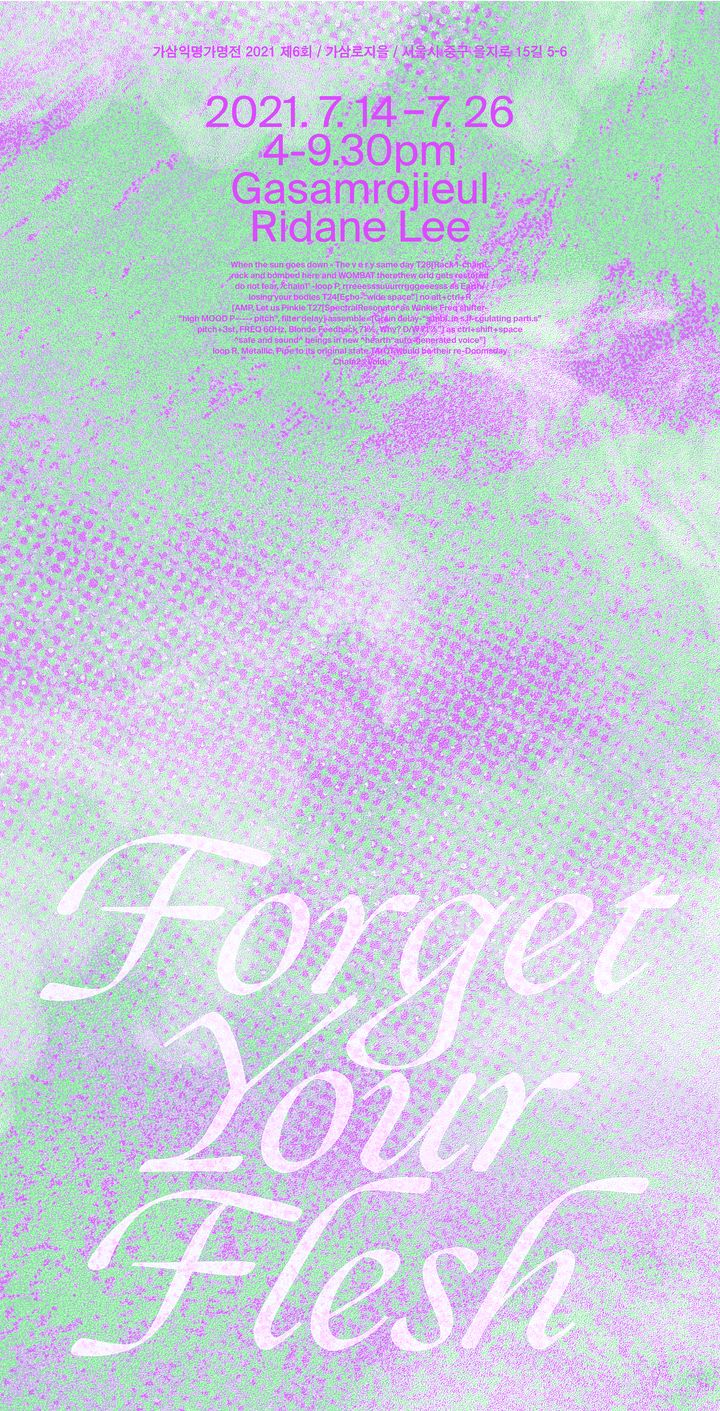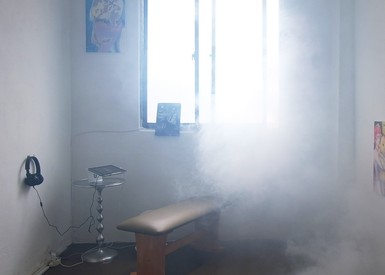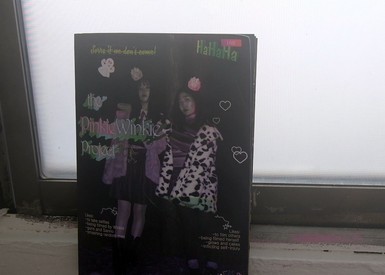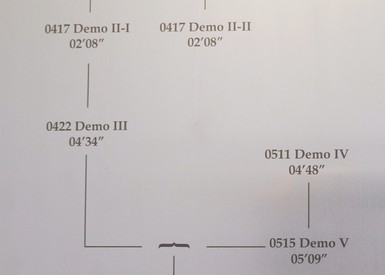Forget Your Flesh

Exhibition Description
Along with ‘XX’, on the zenith-zero point
: Even if someone calls me to a halt with some/a name…
Some talk on identity could have been asserted, yet as it gets covered by the epidermis of proof and testimony we face the inability of disarmament. Identity stands on the forefront of offense and defense while homogenizing its epidermis and inside; surely enough one cannot be understood if they hide their identity, but gets stigmatized if they plainly express it. For some parts identity is something given, too, by oneself or by some others, some bodies, some societies, or (to be macroscopic) by some symbols existing in this world. Then what is intrinsic identity? If identity is intrinsic how does it differ from biological characteristics; would it be possible to formulate the differences in words?… Words assume a listener.
If words assume a careful listener, movements get formalized and the internal motility stops. The (respective) relationship we flourish with identity does not remain in the external motility. Some power other than the external relationship-making is already inherent in identity: an internal motion, a power of relationship formed in internal ways likewise. Ridane Lee tries to find this motility through images, through figuration to be precise, in her show Forget Your Flesh. However, why is it images among all things? We can talk about ‘I’ and ‘the Girls from the Pixel World’ in Hikikomori Romance (2020-2021), ‘Pinkie and Winkie’ who repeat death(s) and revival(s) as Images in The PinkieWinkie Archive (2021, performances of 2019~2021), or Okay Bishes, We’re In (2021), which plays a variation of sound. They are all commonly destined to be edited and to be re-created ‘n times’. What are those destinies to do with identity, for they appear void of it?
More questions ensue. Is identity something essential? Identity is something internally formed, unlike writings and talks that are to be spoken out loud. Yet at the same time, it’s hard to homogenize its outside-inside. Instead of owing the image the ability to breathe and to be sentenced to death, identity takes on several different names to reproduce it. This reproduction relates the identification attitude; regarding the other as one of the same. Unlike the external world which focuses on things ruled by the image; ‘x quality’, ‘being like x’ ‘based on x’, we are now concerned with the figuration process of identity through an inward identification. Our fictions respectively aim to continuously and internally cover(/)overwrite ourselves by name(s), the ‘XX’.
Let us think about/imagine the post-apocalypse on the zenith-zero point of appellation. The apocalypse we previously imagined is something already settled down as a cliché. The post-apocalypse in Hikikomori Romance unveils a space musing on what comes after the ‘settlement site’, otherwise the ‘clichéd scenario of a broken world’. What matters now is the ‘re-thinking' of an apocalypse that keeps on substituting the chaos of civilization or the loss of society. So to speak-call, Hikikomori Romance is a rocky area. Rather than digging a single, solid meaning from symbols, Ridane Lee’s exhibition is an image reproducing-producing space granted to oneself. The narrative space becomes unsubjected, it forms identities founded on internal relationship-making. Let us re-think about/imagine it.
We - including ‘Pinkie’ and ‘Winkie’ - choose to become fictions rather than putting up with someone else’s cover-ups. A fictional world along with ‘XX’ stands against the real world bleached with modifiers like ‘the real me’, ‘of the real’. The act of giving a name to oneself rather than paying homage to the past makes human beings as well as art forms draw an area; where identity can at last establish relationship-making. Akin to video games, to music videos, to performances, to illustrations… in that context the artist chooses to pursue her question about identity with the figuration of images, accompanied by a rather natural transition result of things, in preference to using a blatantly hybrid mixed media (objects, sculpture-like installations). Artworks and ‘I’ become a track of mixed media named myself. Calling myself on that unknown road - rather than by some/a name, it would be such and such name(s), reproduced by the process of identification.
Written by Yuki Konno
List of Works
Okay Bishes, We’re In, 2021
- An Introduction to OBWI, 2021, single channel video, 01’19”
- The OBWI Lyrics, inspired by Donna Haraway, 2021, label paper print, 29.7 x 42 cm
- Our Meiosis Comes in Proliferous Threads, 2021, lenticular print, each 19 x 41 cm
- The Family Tree of OBWI, 2021, aluminium UV print, 62.7 x 27.4 cm
- The Final OBWI, 2021, worksheet and sound by Jampad, adhesive vinyl text print, 05’56”
- Forget Your Flesh, 2021, fog machine installation, every day at 4|7.30 pm
Hikikomori Romance, 2020-2021, single channel video, 22’19”
The PinkieWinkie Project Archive, 2021, 12p. magazine, 29.7 x 21 cm
Pshaw(Wombat I), 2020, oil on canvas, 53 x 33.4 cm
Pshaw(Wombat II), 2020, oil on canvas, 53 x 33.4 cm
Dates
July 14 - 26, 2021
Curator
Ridane Lee
Artists
Ridane Lee
Sound
Jamped
Design
Yoovin Baek



